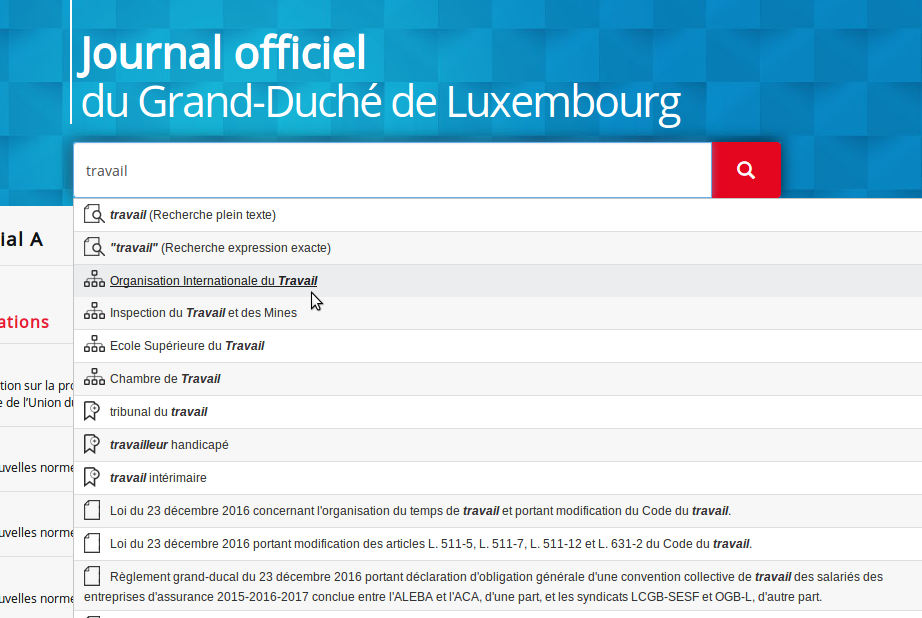Use case

Government of Luxembourg
legilux.public.lu / Casemates
Luxembourg launched the new version of its legislative portal http://legilux.public.lu on January 1, 2017. In the combined movement of the ELI (European Legislation Idenfier) initiative, open data and the web of data, this is based on an open, searchable legislative knowledge graph: the "Casemates" database, accessible at http://data.legilux.public.lu/.
This knowledge graph is based on a modeling of legislative texts in FRBR-OO (the latest evolution in terms of bibliographic description), which precisely distinguishes a law in general, a particular version of the law (published in the Journal Officiel, consolidated on such and such a date, etc.), and a specific format (HTML, XML, PDF) from a particular version. The graph then captures all the relationships between legal texts: citation links, amendment links, repeal links, transposition links, bill links, etc. Controlled vocabularies also form part of the knowledge graph: list of Luxembourg communes, themes, text types, ministries, etc.
The richness of this graph enables intelligent autocompletion and precise search facets in the Legilux search engine: the user is guided by icons to select a ministry, a place, a theme, or even a legal text directly. ElasticSearch powers the Legilux search engine.

The "raw" knowledge graph - in RDF - is open on the web: through ELI (and schema.org) metadata included in Legilux records, through dereferenceable URIs, through downloadable exports, through a direct query service in SPARQL. Data openness is complete.
I provided project management assistance upstream of the project: summary of requirements and objectives, functional architecture, drafting of both Casemates and Legilux specifications. I was also involved in monitoring the implementation, entrusted to SWORD, to ensure compliance with the specifications. The result is a state-of-the-art law publication system in line with web standards, and data dissemination constraints for citizens, legal publishers and search engines.
Back to the list of use cases